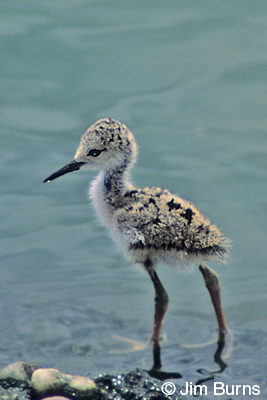
As a birder, I've long been aware of the issue with outdoor cats and birds. Here's the bottom line--cats are killers and outdoor cats kill birds. Period. In a column last year I alluded to the huge problem of feral cats at the Valley's premier birding venue, the Gilbert Riparian Area (GRA). A picture is worth a thousand words. A friend recently sent me a photo of one of GRA's feral cats with a baby black-necked stilt in its mouth.
The city of Gilbert has attempted, without much success, several solutions to the feral cat problem at GRA. Birding friends have advised me against a column such as this unless I have a solution. I have one. One that is elegant in its natural simplicity. Introduce a pair of coyotes into the GRA microhabitat.
Before all the cat lovers out there inundate me with email pointing out that this column contradicts my recent one about accepting and embracing the realities of nature, let me make two points. The first is that feral cats are not in any way part of nature. My dictionary defines "feral" as "animals having become wild from a state of domestication." When cats we have domesticated are left to run loose outdoors in a manicured urban environment they are, by default, atop the food chain and will kill all the species below them.
Secondly, anyone who truly loves their cat will not allow it to roam freely outdoors. The risks to outdoor cats include cars, attacks by naturally wild animals, poisons, diseases, and abuse by humans. Below are three websites which summarize the problems and give tips on how those who love their cats can convert them from outdoor vermin to indoor only pets.
abcbirds.org/abcprograms/policy/cats/
umd.umich.edu/dept/rouge_river/cats.html
audubon.org/bird/cat/
Here is some statistical food for thought. If every outdoor cat in the U.S. kills only one bird per year, that's 60 million dead birds. A U.S. Fish and Wildlife Service report states that, in Wisconsin alone, 39 million birds are killed by feral cats every year. The average life span of outdoor cats is five years compared to 17 years for indoor cats.
Perhaps bird lovers, true cat lovers, and the veterinarians who service them can work together to educate cat owners and those who feed feral cats. Let me repeat the bottom line. Feral cats are not part of nature. Feral cats kill birds. If your cat is outdoors right now or if you are feeding a feral cat, you are not a cat lover and you have no concern for its welfare or that of naturally occurring wildlife that others enjoy. Cats belong indoors.